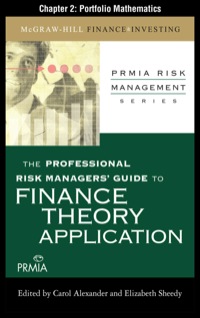Question
Our company has been anticipating an expansion into some vertical companies. We have been discussing the cost of financing such a venture. We have gathered
Our company has been anticipating an expansion into some vertical companies. We have been discussing the cost of financing such a venture. We have gathered the following data from company archives. Use the worksheet provided to determine the cost of financing.
- Debt: The current price of the companys 12% coupon, noncallable debt with 20 years of maturity remaining is $1153.72 years. There are currently 70,000 bonds outstanding. The new bonds would be privately placed so there is no flotation cost expected.
- Preferred Equity: The company has 200,000 shares of this 10% $100 par value preferred stock selling at $116.95 per share. The company has experienced a 5% of market value flotation costs for past issues of preferred stock.
- Equity: The common stock is currently selling for $50. There are 3 million shares outstanding with the most recent dividend at $3.12. Historically the companys growth rate on dividends has been 5.8%. The company has experienced a $2 flotation costs on previous equity issues. Additional data from the economy follows: The risk-free rate is currently 5.6%, the companys beta is 1.2, and the risk market premium is 6%.
- Further information has come available from the companys accountants and our debt investment banker. The company is expecting 90 million in retained earnings next year. Investment bankers have estimated that if the company needs more than 15,000,000 in debt the after-tax cost will increase to 8.75%. The companys marginal tax rate is 25%.
- What are the following costs?
| Before-tax cost of debt |
|
| Before-tax costs of preferred stock |
|
| Before-tax cost of retained earnings (average) |
|
| Before-tax cost of new issues of equity |
|
- What are the after-tax costs of financing
| After-tax cost of debt |
|
| After-tax costs of preferred stock |
|
| After-tax cost of retained earnings (average) |
|
| After-tax cost of new issues of equity |
|
- What are the current weights for the companys capital structure?
| Source | Weight |
|
|
|
|
|
|
|
|
|
- What is the WACC for the firm without any break-points?
|
|
- Create the MWCC for the firm using the break-points. A table will work for this.
| Range | Cost |
|
|
|
|
|
|
|
|
|
- If the company decides to alter its capital structure, what will happen to the cost of financing? The company is considering increasing its weight in debt to 40% by reducing the equity by an amount to provide a 100% structure. This will also increase the costs of the preferred stock and equity by 2%.
| Cost without new equity |
|
| Cost with new equity |
|
Step by Step Solution
There are 3 Steps involved in it
Step: 1

Get Instant Access to Expert-Tailored Solutions
See step-by-step solutions with expert insights and AI powered tools for academic success
Step: 2

Step: 3

Ace Your Homework with AI
Get the answers you need in no time with our AI-driven, step-by-step assistance
Get Started


